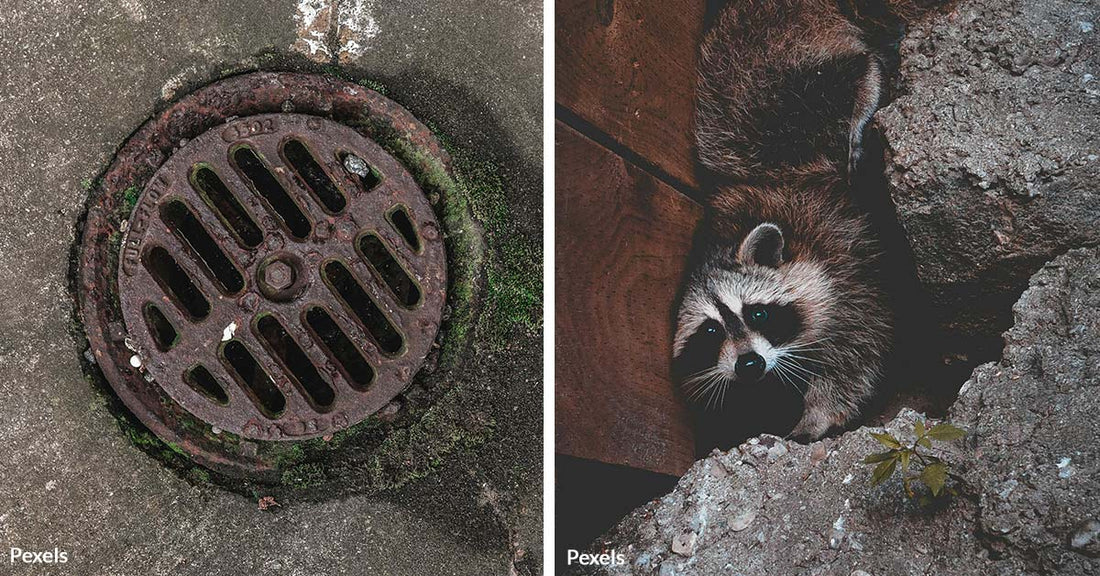Alligators Roam And Raccoons Rule In Florida's Sewers
Matthew Russell
In the heart of Gainesville, Florida, an unlikely ecosystem thrives beneath city streets. Researchers from the University of Florida discovered an astonishing variety of wildlife living in the stormwater sewer system. Cameras set up in the tunnels captured nearly 3,800 sightings of 35 animal species over a 60-day period.

Photo: Pexels
Researchers deployed 39 cameras in Florida storm drains.
Surprising Inhabitants
Among these creatures, alligators, raccoons, and bats dominate the record. The findings have startled scientists and raised new questions about urban planning and environmental impact. According to UPI, the abundance of animals found below the surface challenges common assumptions about where wildlife can live.
The study shows that these sewers serve as vital corridors for species navigating between urban ponds and green spaces. Alligators were often seen using the tunnels as thoroughfares, connecting isolated water bodies.

Photo: Pexels
Stormwater systems connect isolated urban ponds.
Unexpected Behavior in Urban Wildlife
“It’s like something out of *Teenage Mutant Ninja Turtles*,” Alan Ivory, a doctoral student leading the research, told The New York Times.
Ivory explained that while most alligators used the sewers to move between ponds safely, some even appeared to hunt for fish in these narrow passageways, using the infrastructure to their advantage as they cornered their prey.
The study did not limit its focus to large reptiles. More than 1,800 raccoon sightings, along with nearly 700 bats, add to the diverse tapestry of urban wildlife. These smaller mammals navigate the labyrinth of pipes with ease. Cameras recorded raccoons curiously interacting with the equipment, sometimes even removing cameras from their mounts.
WCJB reported that these animals find refuge in the sewers, which act as a network of safe passageways amid the city’s busy streets.

Photo: Pexels
Alligators frequently use sewers as transit routes.
Implications for Urban Planning
The implications of this research extend far beyond simply cataloging unusual animal behavior. Urban wildlife and environmental planners now face the challenge of adapting city infrastructure to better support these unexpected inhabitants. The study suggests that sewers could be enhanced with features such as ramps and exclusion devices. These modifications might prevent smaller species like amphibians and reptiles from becoming trapped, especially during heavy rain events when water levels rise quickly.
As noted by The Independent, simple design changes could help ensure that these animals maintain their underground highways without suffering undue harm.

Photo: Pexels
Wildlife can find refuge in unexpected underground corridors.
Adapting to a Changing Landscape
The impact of urbanization on natural habitats becomes clear when one sees how species adapt to man-made environments. Florida’s stormwater systems, built primarily to divert rainwater, have inadvertently created safe passages for wildlife.
The study underscores how essential these hidden corridors are in maintaining biodiversity within cities. When faced with sprawling urban development, animals use every available resource to survive. This behavior points to an urgent need for city planners to integrate wildlife conservation into infrastructure projects.
As Accuweather reports, researchers believe that lessons learned from Gainesville may apply to other urban areas across the state.
Challenges and Future Directions
The cameras also documented incidents of animals becoming trapped after heavy storms. Snakes, toads, and even bats faced dangers when water rapidly filled the tunnels. Escape routes and safer passageways in urban infrastructure could be vital in protecting species that rely on these man-made habitats. The research calls for further studies to understand how best to balance human needs with the preservation of these hidden ecosystems.

Photo: Pexels
Animals adapt remarkably to urban infrastructure.
A Resilient Ecosystem Emerges
The unexpected wildlife in Gainesville’s sewers provides a glimpse into nature’s resilience. It reveals that even in places where humans seldom look, life finds a way. The study offers critical insights into how species use urban landscapes to their advantage. As urban areas continue to expand, understanding these patterns will be key to creating sustainable environments for both people and wildlife.
Researchers like Alan Ivory are urging city planners to consider these findings seriously. Their work could pave the way for new urban designs that support biodiversity and mitigate human-wildlife conflict.
This report marks the first comprehensive look at how animals use Florida’s underground stormwater systems. It challenges traditional views of urban wildlife and offers a fresh perspective on how human infrastructure can serve as a refuge. With over 35 species recorded and innovative ideas for urban planning on the horizon, the future may see cities that not only accommodate human life but also embrace the rich tapestry of nature that thrives in unexpected places.

